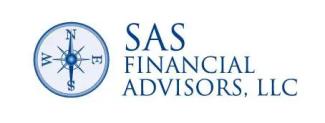Tax Filing Deadline: May 17th, 2021
April 15th is a day enshrined in our personal financial calendars as the day that federal and state income taxes need to be filed. This year the IRS granted an extension. The federal tax filing deadline is now May 17th, 2021.
As of today, California has not changed its state income tax filing due date. Also, the IRS is saying that estimated tax payments due on April 15th will still be expected. As far as I can figure, that means for the self-employed we will still have to have our taxes prepared by April 15th to know what our estimated tax payments will be. The worst case is we make the same payments we made last year.
Retirement Account Contributions
- For existing SAS clients, you will receive another email if you have an account eligible for a retirement account contribution for 2021
- Tax filing day is the last day you can contribute to individual retirement accounts: Traditional or Roth IRAs.
- If you contribute to a SEP IRA(for self-employed individuals), however, the deadline can include filing extensions if that applies to you.
- The contribution limits have not changed from 2019.
- Regular contributions to an IRA are $6,000 or if you are over age 50 you are eligible for a catch-up contribution of up to $1,000. Here is a link to the IRS website providing information on individual retirement plans:
Last week the Federal Reserve met and issued a statement asserting that the Fed funds rate will stay where it is at 0-.25% until the economy recovers. That means unemployment will need to fall to around or below 4%. The Fed is predicting interest rates stay low through 2023, inflation stays around 2% for a longer period, and GDP growth rate surges in 2021 and then eases longer term. For one day last week, markets were reassured but the next day markets sold off based on the fear that intermediate and longer-term interest rates were heading higher. Higher interest rates impact growth stocks in the technology and health area.
We have mentioned before how good news can be bad news and vice versa depending on the phase of the business cycle. Currently, we have rebounded from a recession that has yet to be declared. Since the third quarter, value stocks have been market favorites, a trend extending into the new year’s first quarter. First-quarter earnings will start in mid-April and give some indication of whether GDP growth rate predictions and earnings predictions will come to fruition.
Pre-Covid-19 modest GDP growth meant no overheating economy and the Fed could keep interest rates low. In 2013 the Fed Reserve chairman Bernanke announced a back off from the strategy after the financial meltdown of quantitative easing, meaning the Fed was purchasing massive amounts of bonds and flooding the economy with money. A proposed change in this policy caused panic in the bond market. Quantitative easing has been employed and expanded post the Covid-19 economic crisis. There are some market fears that when bond purchases are reduced, a panic in markets, such as the panic in 2013, may result.
Now that the American Rescue Plan of 2021 has passed, the Biden administration is discussing a massive stimulus bill addressing infrastructure, early childhood education, and climate change. Estimated price tag: $3 trillion. Along with an increase in spending, tax increases will be proposed. Biden talked about tax increases on the campaign trail, mostly for corporations and individuals/families earning over $400k/year. It remains to be seen what eventually will be proposed and then enacted.
This website is informational only and does not constitute investment advice or a solicitation. Investments and investment strategies recommended in this newsletter may not be suitable for all investors. SAS Financial Advisors, LLC and its members may hold positions in the securities mentioned within this newsletter.

